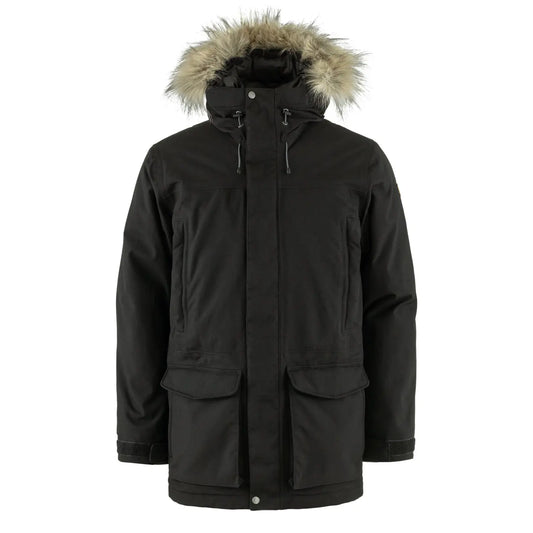In 1968, a 32-year-old Åke Nordin produced his first Fjällräven jacket. He called it the Greenland Jacket. It was made with his new G-1000 material ("G" standing for Greenland), which was waxed with his own Greenland Wax. The story begins two years prior, when Greenland was the destination for a team of Scandinavian alpinists and researchers who needed to acquire some gear before setting off. Step forward the industrious Fjällräven founder, Åke Nordin, who offered them his aluminium-framed backpacks and new Thermo tents. Although at that time he didn't have any clothing to contribute, the team relied on the materials of the time, boiled wool and leather. The team survived, and the mission was a success, although their clothing had let them down, being heavy, slow-drying, and lacking resistance to the harsh Greenland climate.
Åke saw this as a challenge to create the perfect all-round outdoor adventure jacket. A jacket that kept you warm and dry, that wouldn't wear out or weigh you down. A material quickly presented itself. A material Åke had experimented with before when creating his tents. He'd initially been ruled out. But with some tweaking and treatment, it could work as jacket material. Åke went back to the drawing board and tested a range of materials and impregnations. Although initially stumped, he suddenly had a brilliant idea. In his youth, Åke and his friends had tried ski jumping, where they'd spend many an hour hanging out at the huge Swoosh-shaped slope in Örnsköldsvik (his home town on Sweden's High Coast). To avoid freezing their behinds off, they waxed the backs of their trousers to keep the snow out, keep their trousers dry, and keep their behinds warm. Åke used this idea to develop Greenland Wax. And this wax offered the wind and water resistance he was looking for. It even improved the material's durability.
With the material and impregnation sorted, he then set about creating his perfect outdoor jacket, complete with practical pockets and a relaxed, loose fit. In continued honour of the research mission that inspired it, Åke called this jacket the Greenland Jacket. The rest, as they say, is history. The Greenland Jacket, launched in 1968, went on to enable a whole generation of nature lovers to spend more time outdoors and is now one of Fjällräven's most iconic products, second only to their Kånken backpack.
Having reached this landmark of 50 years, Fjällräven are celebrating with the release of a brand new Greenland collection, inspired by the original jacket. The latest collection builds on the classic range, staying true to the look and feel of the originals, while evolving further to ensure that this new generation of garments and accessories is made in a sustainable and environmentally conscious manner.
By Neil Summers.
Related reading
- How Greenland Wax improves G-1000 performance
- G-1000 fabric: durable outdoor clothing excellence
- Kånken Greenland: heritage colours and details
- Featured: Greenland No. 1 Special Edition Jacket
- The ultimate Fjällräven jacket guide
- High Coast Wind Jacket review
- What to expect from Fjällräven Spring/Summer
- Fjällräven: born and raised in the great outdoors














